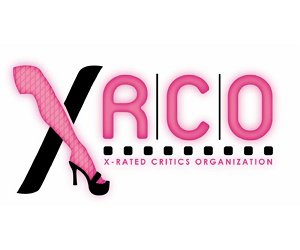Source: PlanetOut
By: PlanetOut Staff
It’s been a tough year for the Catholic church, at least on paper.
When Pope John Paul II decried July’s World Pride Roma as "offensive to Christians" and the city of Rome withdrew some of its promised official support for the event, the controversy sparked an unprecedented public conversation about homosexuality in Italy. Several public figures took the opportunity to come out. In November, a Vatican official, Colombian Cardinal Dario Castrillon, publicly admitted that some Roman Catholic priests are gay — despite the Catholic position that homosexuality is "intrinsically evil" and "objectively disordered" — although he said their numbers are "much smaller" than in the rest of society. "Their existence hurts us, but we are not ashamed of them," he said.
One of the Pope’s biographers has dared to confront the Vatican’s anxiety head-on in a new book. Marco Politi’s La Confessione is a nonfiction account of one unidentified Italian priest’s struggle to reconcile his gay identity with his commitment to the Catholic church. In the book the priest describes an underground network of gay priests within the Italian church. "There are always those who fear being discovered by superiors and listed as partners in a homosexual corporation. It’s incredible how the fear is so widespread," he says.
Politi, a journalist who covers the Vatican for the Roman newspaper La Repubblica, also co-wrote His Holiness, a 1997 biography of Pope John Paul II, with American journalist Carl Bernstein. Politi told the Associated Press that he had trouble finding a publisher for La Confessione, due to "a certain amount of fear" of the Vatican’s reaction. But the book’s first Italian printing of 5000 sold out within three weeks.
Earlier this year, three books published in the U.S. addressed the "gay crisis" facing the American Catholic church. The book that drew the most favorable critical reception — as well as the most admiring audience among the Catholic clergy — was the solemn and remarkably candid The Changing Face of the Priesthood by Donald Cozzens, a highly respected "priest’s priest" who has spent 35 years ministering to priests and seminarians in the Diocese of Cleveland.
The Catholic clergy has been dramatically shrinking throughout the past thirty years. The average age of diocesan priests is now close to 60 — raising serious questions about the future of the church. Cozzens blames this "crisis of soul" on the clergy’s eroding authority after Vatican guidelines issued in the early 1960s gave new power to lay Catholics, the loss of respect due to sex abuse scandals, the difficulty of finding intimacy while remaining celibate, and "the growing perception (one seldom contested by those who know the priesthood well) the priesthood is or is becoming a gay profession." No one knows the real numbers, but Cozzens cites a 1989 study that estimated that that 48.5 percent of priests and 55.1 percent of seminarians were gay. He describes a culture of secrecy, confusion, and fear — a vast and ornate closet — that is causing profound damage to both its straight and its gay inhabitants.
Papal Sin, historian Garry Wills’s no-holds-barred critique of Pope John Paul II, the Catholic doctrine of papal infallibility, and the Churches "structures of deceit," also predicts imminent disaster if the church doesn’t address looming issues of sex and gender. Because of the current pope’s continued insistence on celibacy among the clergy, Wills says, "many observers suspect that John Paul II’s real legacy to his Church is a gay priesthood." More priests leave the clergy to marry than for any other reason. It seems likely then, as gay relationships become more and more accepted in secular society, that gay men will — like their straight counterparts — become increasingly reluctant to choose either celibacy or a guilt-ridden double existence and begin departing the priesthood en masse.
In his controversial book, The Silence of Sodom, gay professor of religion Mark D. Jordan goes even further, claiming not only that the church is full of gay men, but that its structures and rituals themselves — the all-male clergy in their flowing vestments, even the act of taking communion below a naked statue of Christ — are inherently homoerotic. He assails gay priests for colluding in the church’s culture of silence. "I want gay priests — those who are out and those who are not — to think about what they are doing; to do an examination of conscience on themselves. I do think that the likeliest place for change to start is with a change of heart in the gay priests," he told the Southern Voice.
Each author begins by professing his love for the Catholic church, as well as his deep concern for its current hypocrisies and its future survival. And every one ends by prescribing the same remedy — urgent and uncensored discussion reaching to the highest levels of the church hierarchy. Their courageous books are tiny — but necessary — first steps.

















